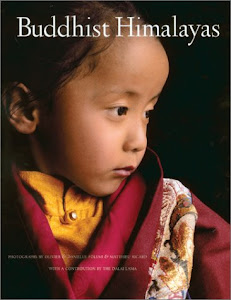
Buddhist Himalayas
Catégorie: Scolaire et Parascolaire, Beaux livres, Dictionnaires, langues et encyclopédies
Auteur: Nancy Springer
Éditeur: Nick Spencer
Publié: 2019-12-26
Écrivain: Casey McQuiston
Langue: Vietnamien, Hollandais, Italien, Basque
Format: Livre audio, epub
Auteur: Nancy Springer
Éditeur: Nick Spencer
Publié: 2019-12-26
Écrivain: Casey McQuiston
Langue: Vietnamien, Hollandais, Italien, Basque
Format: Livre audio, epub
Buddhist deities - Wikipedia - In Buddhism, it is believed that they reside deep under the Himalayas where they guard the wealth of the Earth. The yaksha are ruled over by Kubera, the lord of wealth. In Burma there exists the popular worship of nature spirits called nats which are worshiped alongside of Buddhism. See also. Buddhist cosmology; Hindu deities; Karma in Buddhism
Chinese Buddhist Sculpture | Essay | The Metropolitan - Chinese Buddhist sculpture frequently illustrates interchanges between China and other Buddhist centers. Works with powerful physiques and thin clothing derive from Indian prototypes, while sculptures that feature thin bodies with thick clothing evince a Chinese idiom. Many mix these visual traditions. After the eleventh and twelfth centuries, when Buddhism disappeared from India, China and
Buddhist architecture - Wikipedia - Buddhist religious architecture developed in the Indian types of structures are associated with the religious architecture of early Buddhism: monasteries (), places to venerate relics (), and shrines or prayer halls (chaityas, also called chaitya grihas), which later came to be called temples in some places.. The initial function of a stupa was the veneration and safe
Buddhist Gods, Buddhist Deities Statues, Dharmapala - · Buddhist gods (devas and brahmas) and also bodhisattvas still exist in the cycle of rebirth known as samsara. As a result, Buddhist gods and deities have the same frailties as humans such as sensuous desire, conceit and emotion. The Buddha, who has eliminated all traces of these mundane frailties, reigns supreme
Sikkim | History, Map, Capital, & Population | Britannica - Sikkim, state of India, located in the northeastern part of the country, in the eastern Himalayas. Long a sovereign political entity, Sikkim became a protectorate of India in 1950 and an Indian state in 1975. It is of great strategical importance for India because of its location along several international boundaries
Buddhism and Buddhist Art | Essay | The Metropolitan - In the earliest Buddhist art of India, the Buddha was not represented in human form. His presence was indicated instead by a sign, such as a pair of footprints, an empty seat, or an empty space beneath a parasol. In the first century , the human image of one Buddha came to dominate the artistic scene, and one of the first sites at which this occurred was along India’s northwestern
Nathula Pass | Mountain Passes In India | Passes In Himalayas - Passes in Himalayas are mesmerizing and breathe taking. Mountain passes in India attract thousands of tourists every year all around the year. The specialty of Nathula pass is that it is an open trading border posts between the two countries. This is also a gateway for various Buddhist and Hindu pilgrimage site. The pass is one of the agreed Border Personnel meeting points for India and China
Home - Buddhist Digital Resource Center - Seeking Buddhist Manuscripts in the Himalayas: The Tibetan Manuscripts Project of Vienna As part of the University of Vienna-Tibetan Manuscripts Project and the Resources for Kanjur and Tanjur Studies project, Helmut Tauscher, Bruno Lainé and Markus Viehbeck have documented, and made accessible, valuable manuscripts from the western and southern Himalayas, including rare editions of the
Buddhist Art | Boundless Art History - Lumen Learning - A distinctive type of fortress architecture found in the former and present Buddhist kingdoms of the Himalayas is known as dzongs. The initial function of the stupa was the veneration and safe-guarding of the relics of the Buddha. The earliest surviving example of a stupa is in Sanchi (Madhya Pradesh). In accordance with changes in religious practice, stupas were gradually incorporated into
Buddhist sculpture: a collecting guide | Christie's - · To begin to be able to distinguish between cultures, styles and historical periods, Bruck suggests that a collector view as many examples of Buddhist sculpture as possible. In New York, he recommends visiting the Rubin Museum of Art, which is dedicated to the art and preservation of the cultures of the Himalayas, India, and neighbouring regions
[audiobook], [audible], [pdf], [read], [kindle], [online], [english], [free], [epub], [goodreads], [download]












0 komentar:
Posting Komentar
Catatan: Hanya anggota dari blog ini yang dapat mengirim komentar.